
Try these 10 Free Number Mats to teach the numbers 1-10 in five hands-on, super fun ways.
When teaching my kindergartners numbers 1 through 10, I wanted them make the connection between the number and the quantity AND help teach them how to recognize and write the number.
Bonus points for making it fun... So I made these number mats for them and thought you could use them too!
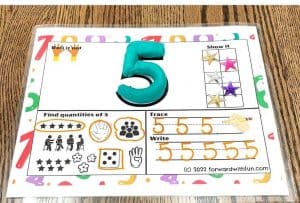
These hands-on number mats teach each number through:
So much learning is happening just by playing to learn with just one number mat.

The common core math standards we hit are:
After printing your number mats, I highly recommend laminating them. My secret weapon is an AmazonBasics laminator that creates a thick, durable lamination for teaching resources I plan to use a lot!
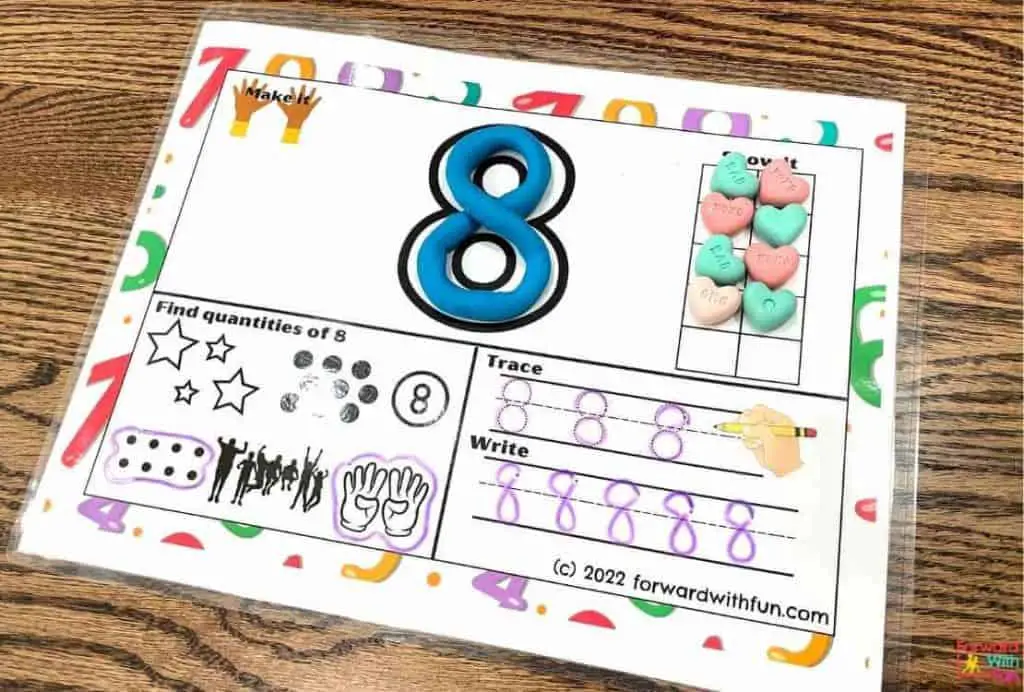
Another option is to use a simple plastic page protector, but those are harder to erase. You can also print them out as single-use printables if you're in a rush.
These number mats are hands-on, so instead of just writing on them, kids are invited to use objects to really engage with each number. We use Play-doh to shape the number, so I love the laminated mats because the dough comes off easily.
Some supplies you might want to have are:
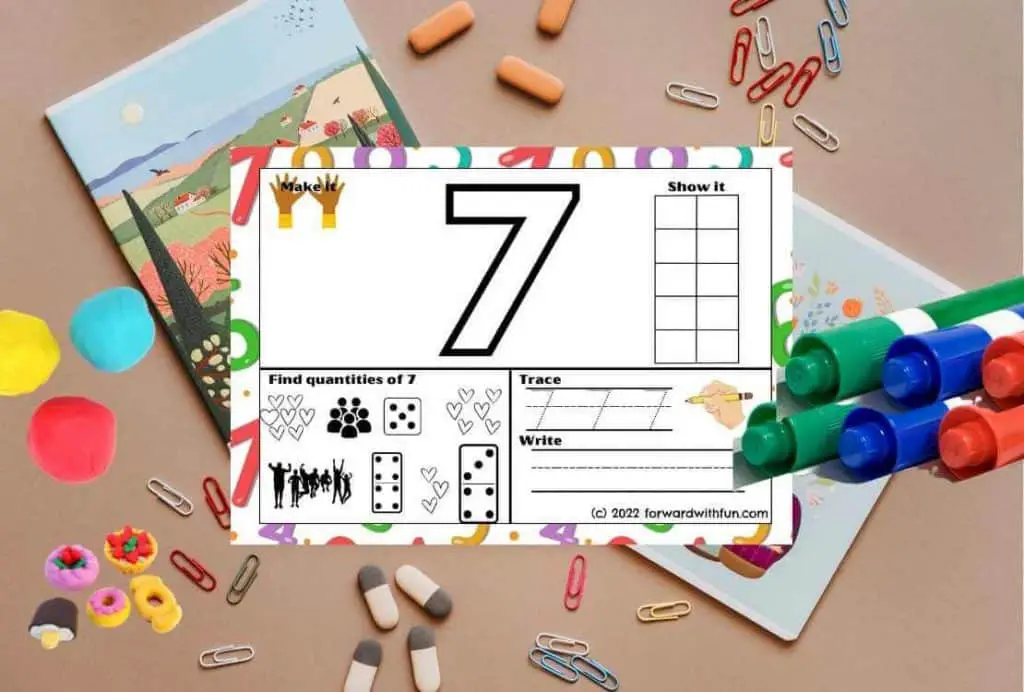
When learning numbers for the first time, kids are already receiving a lot of new input. At the very young age of 3-6 we expect them to memorize all these squiggles and lines, 26 letters- capital and lowercase plus numbers 1-20 in kindergarten. It's a lot!
Repetition is one part of the puzzle. In order to memorize a new number, kids need a ton of exposures to that specific digit. These exposures must be memorable! So a worksheet won't cut it.
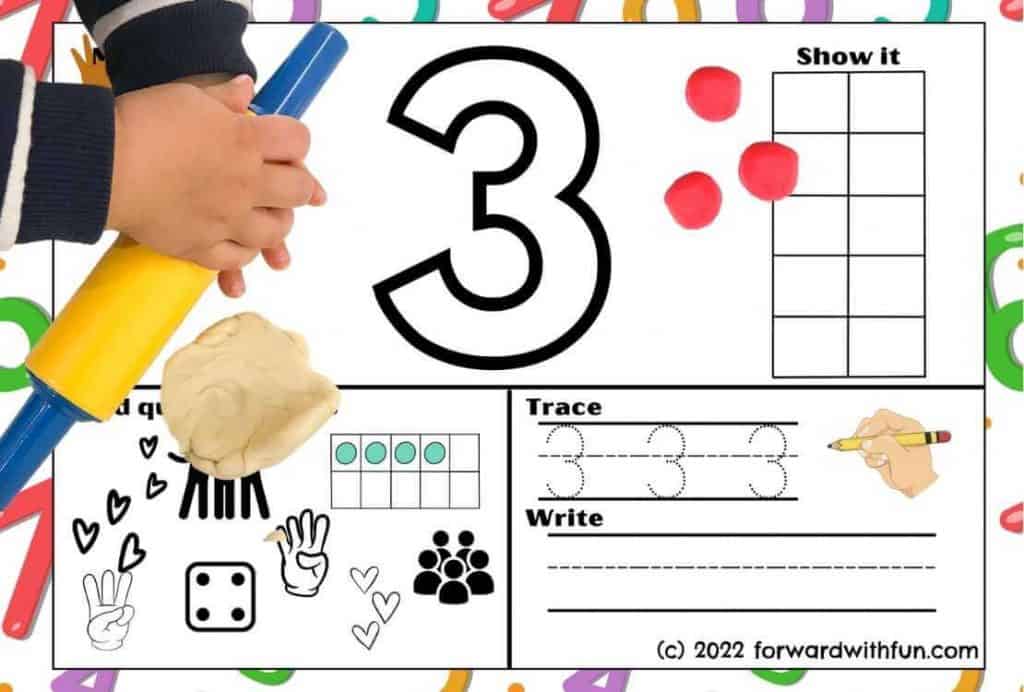
The number mats I'm sharing with you are exciting for my students because they get to work with preferred objects, manipulatives, and use their minds in multiple ways while they work!
They're interacting with each number many times making it easier to remember:
I've said it once and I'll say it again, hands-on experiences are worth 1000 times more than a worksheet a child will do and forget by snack time.
My students LOVE these number mats, and they even ask to do them over and over again solidifying their knowledge and practicing their number sense as well as number identification skills.
I'm sure you're working on letters as well. You don't want to miss these alphabet mats the kids go gaga for!
Does your young child have 1 to 1 correspondence? If they don't, they may count objects too fast and accidentally skip over items or count the same one twice.
The 1 to 1 correspondence definition is counting one number for every object counted. Simple put, it's counting accurately.
One to one correspondence develops for numbers under 5 in the preschool years and by the end of kindergarten, kids are expected to accurately count up to 20 objects.
*As an Amazon affiliate, I may get a small commission for purchases made through links in this post, most likely pennies ; )
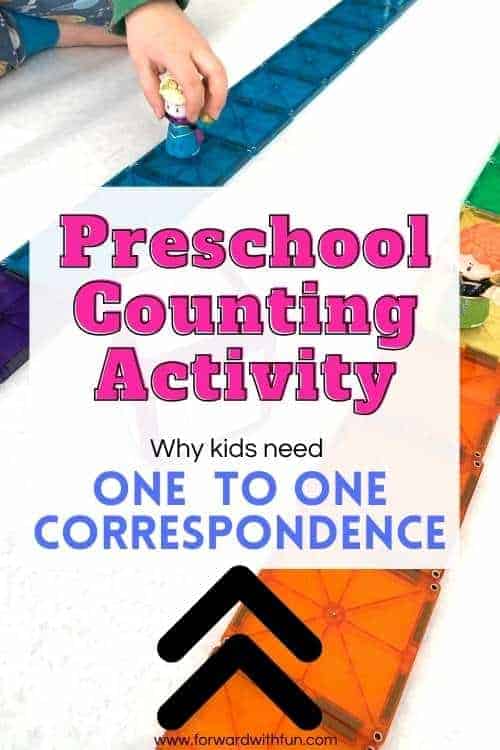

2. Dry Erase Foam Dice- These dry erase dice allow me to put what I want to on each side. For my 2 year old who only knows numbers up till 3, I wanted to reinforce those numbers only. This would also make it easier for her to count with one to one correspondence. On each side, I wrote 1, 1, 2, 2, 3, and 3. You can personalize it however you want! We even use them to add an element of surprise to chores and so many other ways.

3. Two toys of the kids' choosing, could be anything!
Making the board game together will be a great opportunity for practicing 1 to 1 correspondence.
We chose to have two separate tracks, but really you can make a board that all players use!
When making two seperate tracks, it was important that both players had the same number of Magna-tiles, or the game wouldn't be fair. This led us to deciding a certain number and counting that many squares together.
For counting larger numbers, it is important that children move each piece as they count one more in order to keep track.
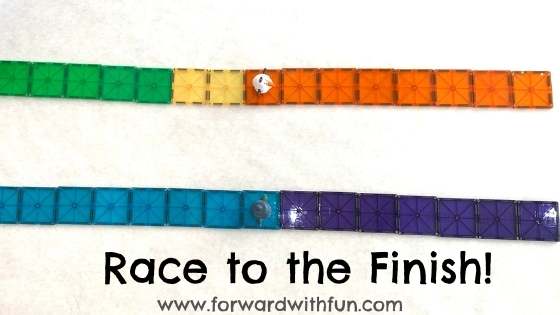
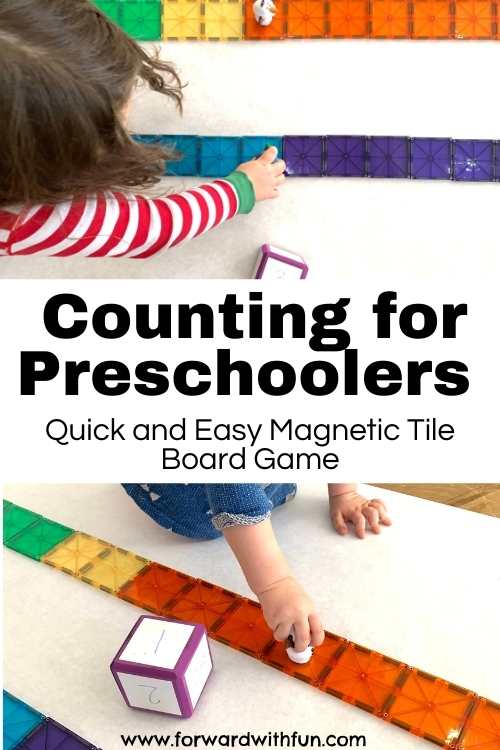
Lil Sis (2.5 years) doesn't yet have 1 to 1 correspondence so I tried these methods to help her better understand:
From beginning to end, she did begin counting with greater accuracy, and as we played again and again, she understood much more.
Kids make a lot of mistakes while rote counting, meaning they're just saying the sequence of numbers they've memorized. In a game, the numbers translate to movements on the board.
By actually having to move each piece only that amount, kids are more focused on counting slowly, leading to greater accuracy.
When kids are counting groups of objects by sight or just by pointing to each item (this happens often in number books when there are no actual manipulatives to move) they more easily lose track of the number of objects.
Giving children manipulatives (actual objects) and asking them to physically pick up and move each item will develop the 1 to 1 correspondence concept that every number said stands for one more item.
To sum it up, help your child develop 1 to 1 correspondence by making sure:
An excellent 1 to 1 correspondence activity that makes sure to do all these things is Dot Sticker Phone Numbers.
Leave a comment below to let me know how you practice 1 to 1 correspondence with your child!
Teachers of young children talk about one to one correspondence, but what is it? One to one correspondence is counting one object for every number said.
Without one to one correspondence, one will not be able to count objects accurately. When a child is able to count one object per each number said, they also understand that a number represents a specific quantity.
At what age do kids develop one to one correspondence? This can be between the ages of 3-5. In kindergarten, kids are expected to count up to 20 objects with one to one correspondence. In preschool up to 10.
*As an Amazon affiliate, I may get a small commission for purchases made through links in this post.
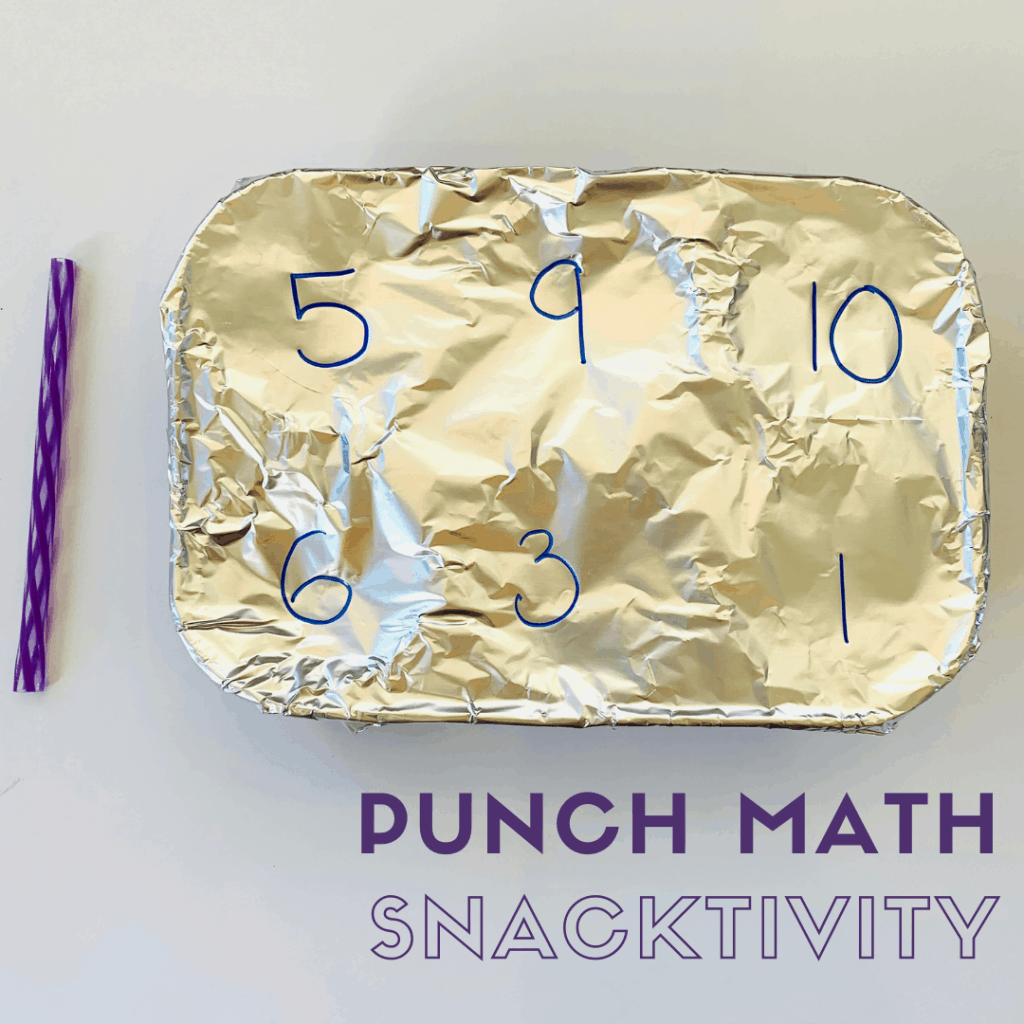
Picture this: you're playing a board game. Your child rolls a 5 and they move their piece WAY MORE than 5 spaces, while managing to only count to five. They're not cheating! They lack one to one correspondence.
When given a quantity of objects and asked to count, many kids count faster than they register each object resulting in counting to a number that is MORE than the actual number of objects!
This happens because kids learn counting as a rote skill. Children memorize the number order much earlier than they learn to count objects, so saying the numbers in that order is automatic. For many, they are just saying numbers without any knowledge of numbers representing quantities.
So, we have get them to SLOW DOWN!
The best way to build one to one correspondence is to give children a way to slow their counting. So, I teach my students a counting rule called, "Touch 1, count 1." For every object they are counting, they must either touch it, or move it to another spot completely.
This snack activity, aka snacktivity, is a highly engaging way to build one to one correspondence with items you already have around the house.
For a very basic one to one correspondence activity - perfect for 2-3 year olds, try this build your own board game activity!
With this simple hands-on learning game, your kid will love learning number recognition, one to one correspondence, numeracy, and even arithmetic. Just grab these few supplies and get ready to play.


For preschoolers, I recommend numbers between 1-10. For kindergarteners, numbers ranging from 1-15. Don't go into the teens unless your child has mastered 1-10.

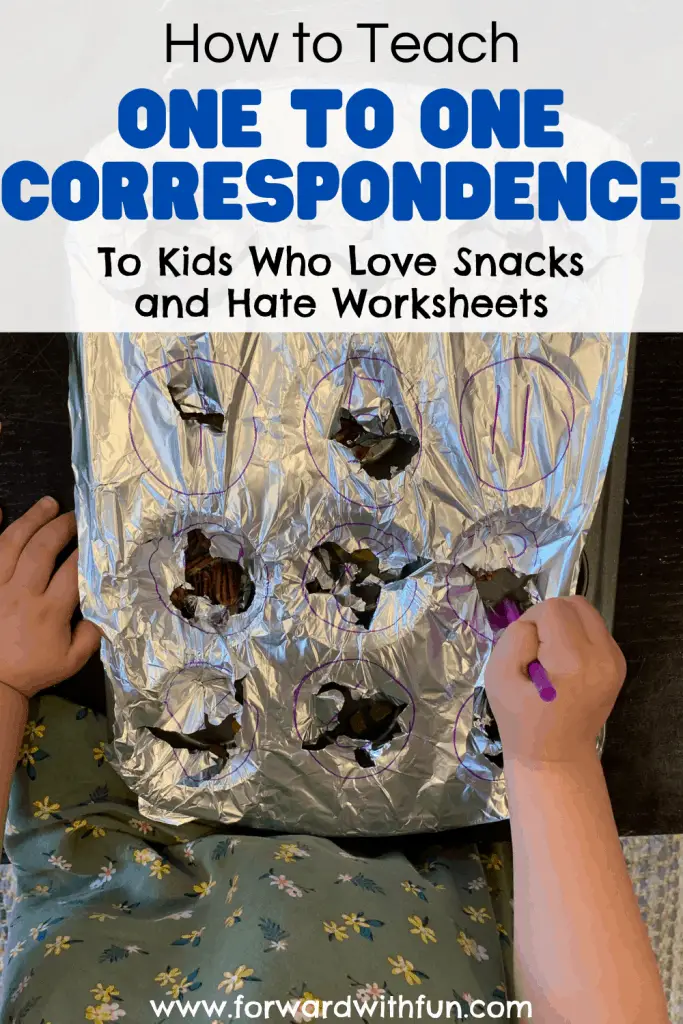
For this version, your child is solely focused on number recognition and one to one correspondence.
To start, present your kiddo with the straw and talk about the numbers they see on the aluminum. Their mission is to uncover their snack by identifying the correct number and punching through the aluminum foil that many times.
Invite your child to play by asking them to punch number 3 three times, number 5 five times, etc.
By punching the straw through the aluminum foil they're forced to slow down their counting and follow the "touch 1, count 1," rule of one to one correspondence.
They'll be thrilled to reveal the snacks underneath with each punch through. For an additional way to practice, you can have them count the snacks as well!
Once your preschooler or kindergartner has a good grip on number identification try this way of playing that builds number sense using more than and less than.
Call out actions such as, "Punch a number that is more than 5. Punch a number that is less than 2."
Another way to play this way is to show them on your hands a number of fingers and ask them to find a number that is more than or less than that many! That way they're "subitizing" the number of fingers, translating that into the number they identified, and then building their knowledge of more and less.
You guessed it: have your child determine which number is the sum or the difference to your simple arithmetic problem, and punch the number the correct number of times to reveal the snack beneath.
Use call outs like, "Punch the number that is 5 +1!" and "Punch the number that is 4-2!"
To scaffold and make this a little less tricky, use your fingers to show addition and subtraction. Hold up 8 fingers, "Punch the number that is this many take away 3!"